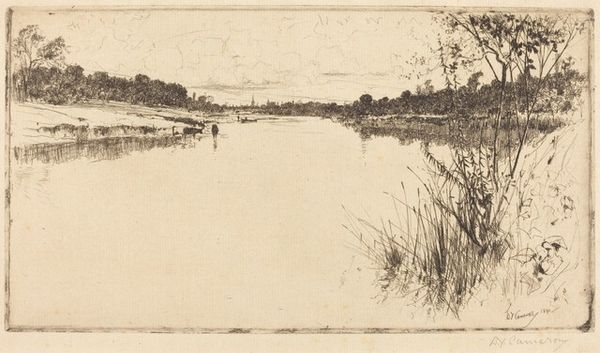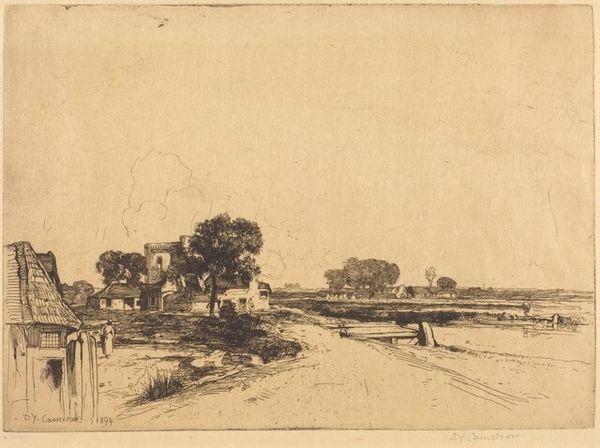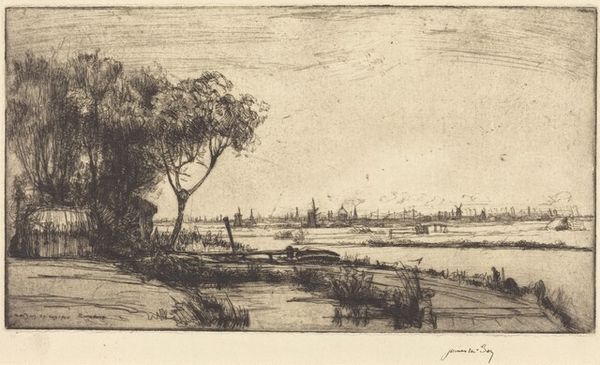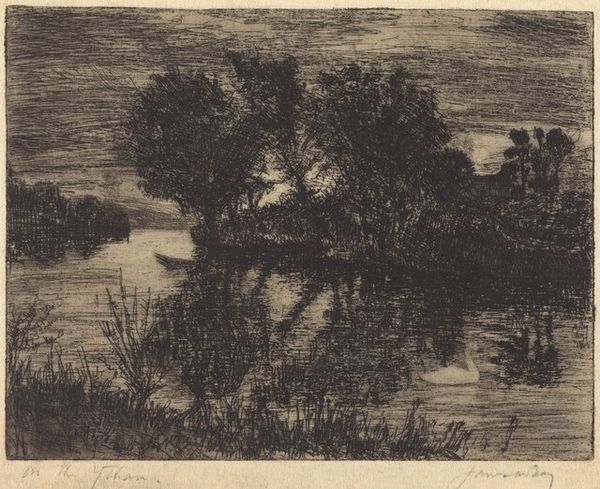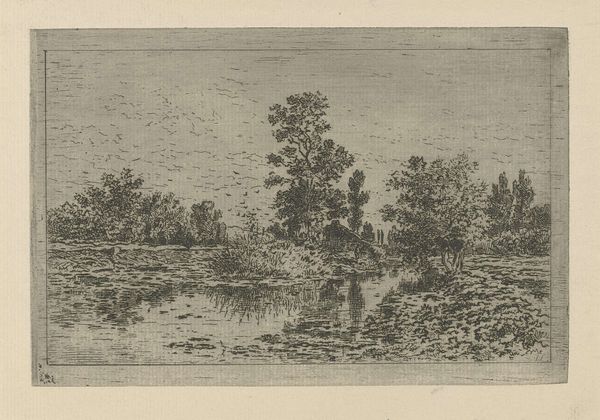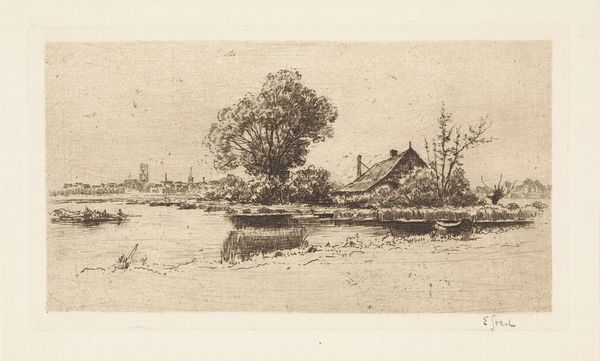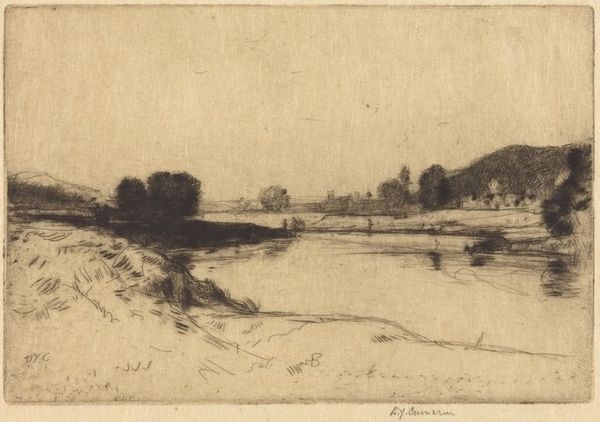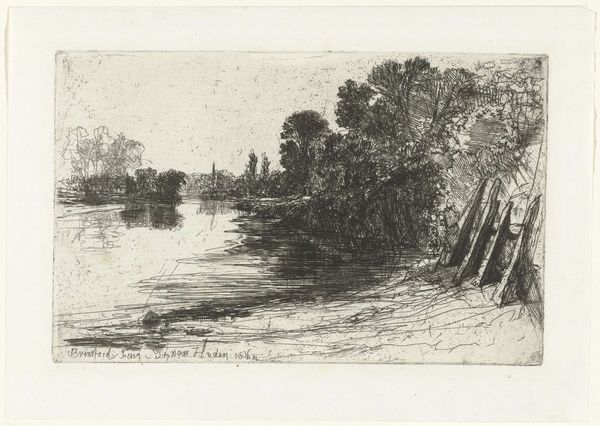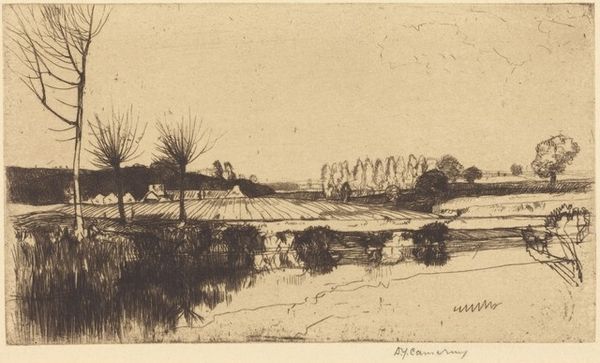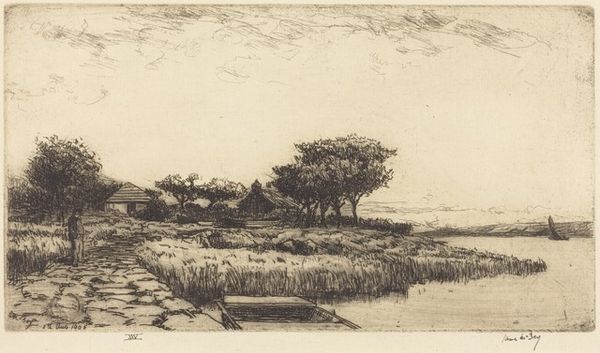
print, etching
# print
#
etching
#
landscape
#
realism
Copyright: National Gallery of Art: CC0 1.0
Curator: This etching by David Young Cameron, created in 1904, is titled "Cambuskenneth." It's a Scottish landscape scene, quite muted in its tones, made all the more delicate through the etching process. Editor: The overwhelming feeling is of stillness, like holding my breath. It's the kind of quiet that lets you hear the far-off sounds – in this case, maybe water lapping, or birds settling in the trees. There is a monastery in the distance that could represent how powerful establishments controlled people's lives for centuries. What is striking is how indistinct everything is, as though it's been blurred by time and political tensions. Curator: It’s interesting you mention that blurring, since Cameron used a very light touch and the selective wiping of ink to achieve that atmosphere. A sharp, crisp depiction simply wouldn’t have captured the mood he wanted. Editor: This image encapsulates an enduring tension between humans and the environment. How can people coexist with it without leaving long-lasting scars, something which Cameron appears to express, by rendering it unclear? Curator: And it works. The technique he employed – those hazy reflections on the river – add so much to the feeling of tranquility. Do you think that that monastery symbolizes resilience against colonial oppression, given its persistence through social changes? Editor: Absolutely. While the monastery projects the permanence of structures, Cameron has intentionally focused on capturing something altogether more intangible in order to discuss political discourse using abstraction and understatement. But to me, the personal aspect is just as resonant: what can we as activists and historians excavate from this? Curator: Perhaps an understanding, or at least an acknowledgement, of the past and its continued influence? I do know that Cameron himself would have likely just hoped his art made people feel something, even without fully knowing what that something is. Editor: A poignant perspective. It encourages introspection and reminds us that art should be about how we experience our place in this ever-changing environment. Thank you!
Comments
No comments
Be the first to comment and join the conversation on the ultimate creative platform.
